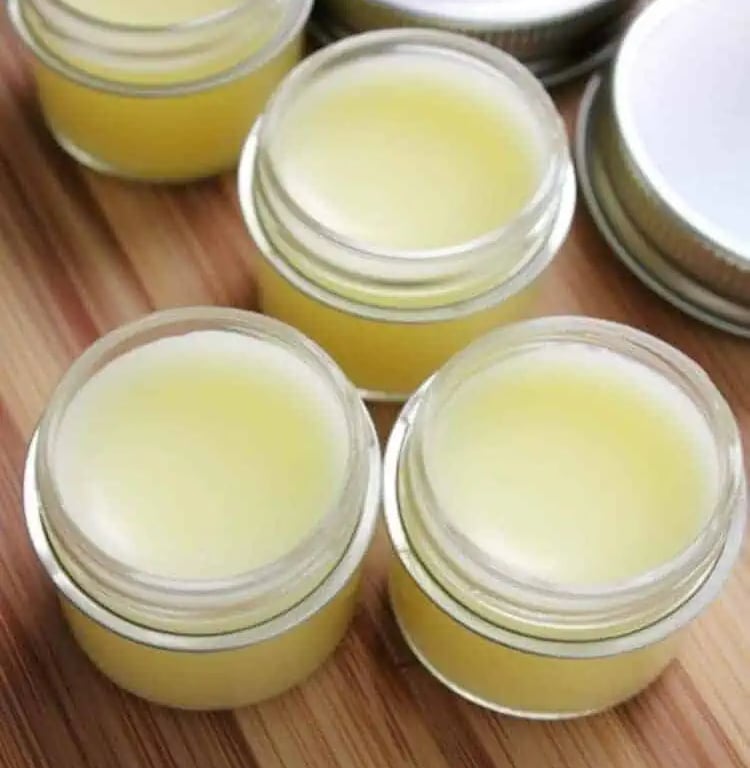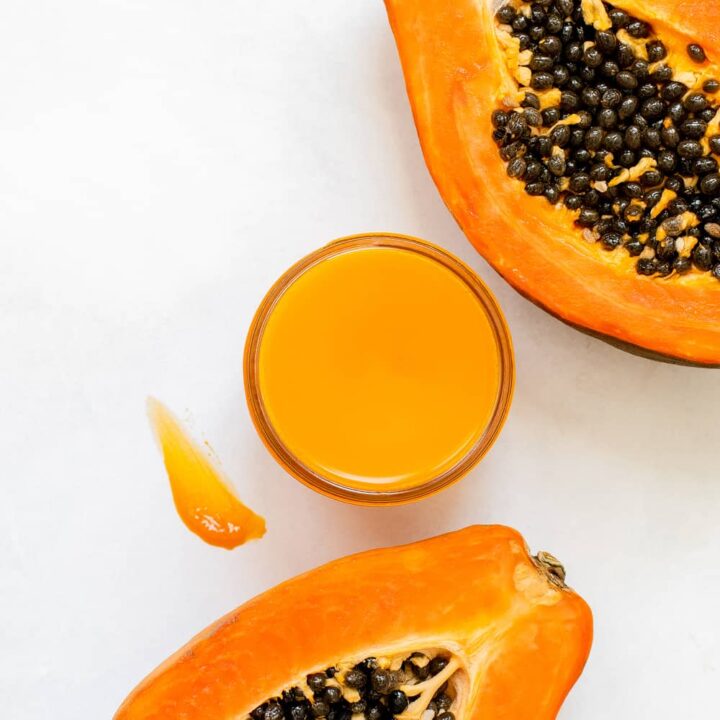DIY papaya lip balm
Make natural DIY papaya lip balm with just 4 ingredients. This easy DIY recipe uses papaya extract, coconut oil, and shea butter to soothe and moisturize dry, chapped lips naturally.
SKINCARE RECIPES
Simple Herbal Remedies
4 min read


DIY Papaya Lip Balm: Natural Nourishing Recipe
This post may contain affiliate links.
Papaya isn't just delicious—it's a skincare powerhouse! Known for its gorgeous color and tropical taste, papaya's healing properties extend far beyond the fruit. Papaya leaves contain papain enzyme, a rich source of immune-boosting antioxidants that's used in premium papaya skincare products. This simple DIY lip balm harnesses that power to soothe even the roughest, most chapped lips.
Our easy recipe combines nourishing papaya extract with moisturizing natural ingredients to create a lip balm that's organic, effective, and smells incredible. Say goodbye to dry, cracked lips!
The Power of Papaya for Your Lips
Papaya extract contains enzymes that gently exfoliate dead skin cells while antioxidants protect and heal. When combined with rich butters and oils, it creates the ultimate lip treatment that soothes, repairs, and prevents future damage.
Understanding Your Ingredients
Coconut Oil
This tropical oil is a lip care superstar. Coconut oil penetrates deeply to moisturize from within while providing antibacterial protection. It melts at body temperature, making it perfect for smooth lip balm application. Rich in fatty acids, it creates a protective barrier that locks in moisture.
Shea Butter
Often called "nature's moisturizer," shea butter is packed with vitamins A and E. It's incredibly nourishing and helps heal cracked, damaged lips. Shea butter provides intense hydration without feeling greasy and contains anti-inflammatory properties that soothe irritated skin. It's especially beneficial for extremely dry or weather-damaged lips.
Beeswax
This natural ingredient gives your lip balm its solid structure while forming a breathable, protective barrier on your lips. Unlike petroleum-based products, beeswax doesn't suffocate skin—it allows lips to breathe while sealing in moisture. Beeswax also contains vitamin A, which supports cell regeneration and healing.
Papaya Extract
The star ingredient! Papaya extract contains papain enzyme and powerful antioxidants that soften rough texture, promote healing, and protect lips from environmental damage. It's what transforms this from a basic lip balm into a therapeutic treatment that actually improves lip condition over time.
What You'll Need
Ingredients:
60ml (4 tbsp) coconut oil
45ml (3 tbsp) shea butter
15ml (1 tbsp) beeswax, shaved or pellets
4 drops papaya extract
Equipment:
Small glass container or empty lip balm tubes
Pyrex jug or heat-safe glass bowl
Saucepan for double boiler
Silicone spatula or wooden spoon
How to Make Your Papaya Lip Balm
Step 1: Create a double boiler by placing your Pyrex jug in a saucepan with a few inches of water. Heat over medium heat until the water simmers gently.
Step 2: Add coconut oil, shea butter, and beeswax to the jug. Stir continuously with your spatula until all solids melt completely into a clear, golden liquid. This usually takes 5-7 minutes.
Step 3: Remove from heat and allow to cool for 1-2 minutes. Mix in the papaya extract drops, stirring well to distribute evenly throughout the mixture.
Step 4: Carefully pour the liquid mixture into your small container or lip balm tubes. Work quickly as it begins to solidify as it cools.
Step 5: Place in the refrigerator for 1-2 hours until the balm hardens completely to a solid consistency.
That's it! You now have beautiful, nourishing DIY papaya lip balm that rivals expensive store-bought versions.
How to Use Your Papaya Lip Balm
Apply generously to lips as needed throughout the day. The papaya extract gently exfoliates and soothes while coconut oil and shea butter provide deep, lasting moisture. This balm is perfect for:
Chapped, dry lips
Wind or sun-damaged lips
Winter weather protection
Overnight lip treatment
Under lipstick as a primer
Post-exfoliation care
For best results, apply before bed and wake up with soft, supple lips!
Customizing Your Lip Balm
Add Natural Colour: Mix in a tiny amount of beetroot powder for a pink tint, or cocoa powder for a brown shade.
Scent Variations: Add 1-2 drops of peppermint, vanilla, or sweet orange essential oil for extra fragrance.
Extra Healing: Include 2-3 drops of vitamin E oil for additional antioxidant protection.
Vegan Version: Replace beeswax with candelilla wax (use slightly less, about 2 tsp).
Storage and Shelf Life
Store your papaya lip balm in a cool, dry place away from direct sunlight and heat. Avoid leaving it in hot cars or direct sun, as it may soften or melt.
Shelf Life: This balm lasts 6-9 months when stored properly. The beeswax acts as a natural preservative, and the lack of water prevents bacterial growth.
Signs to Replace: Discard if you notice any rancid smell, color changes, or unusual texture.
Why Make Your Own Lip Balm?
You Control the Ingredients: Know exactly what's going on your lips—no mystery chemicals or synthetic fragrances.
Cost-Effective: This recipe makes multiple lip balms for less than the cost of one premium tube.
Eco-Friendly: Reusable containers eliminate plastic waste from disposable lip balm tubes.
Freshness Guaranteed: Make small batches for maximum potency and effectiveness.
Perfect for Gifting: Homemade lip balm makes a thoughtful, personal gift for any occasion.
Where to Source Quality Ingredients
Look for organic, unrefined ingredients whenever possible. Cold-pressed coconut oil, raw shea butter, and pure beeswax provide maximum benefits. Ensure your papaya extract is suitable for cosmetic use.
I source many of my ingredients from Amazon using Prime for free, speedy delivery on most items plus access to Prime Video—a household favourite. Try Prime free for 30 days and get your skincare ingredients delivered fast.
Disclaimer: This information does not replace advice from a dermatologist or medical professional. Always patch test new products on your inner arm before use. If you experience irritation, discontinue use immediately. Consult a healthcare provider if you have concerns about ingredient sensitivities.
Affiliate Disclosure: This post may contain affiliate links at no extra cost to you. These links allow us to share products we authentically recommend and use, while supporting our content through a small commission.


